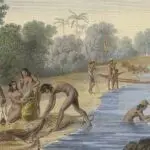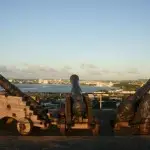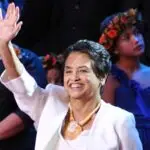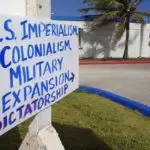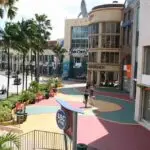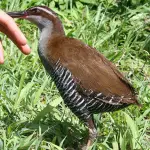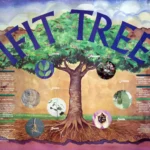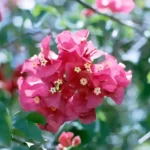About Guam/Guåhan
Table of Contents
Share This
Map
Details about the island
Indigenous people: CHamorus/Chamorros, who first settled the island about 3,500 years ago.
Capital: Hagåtña
Leadership: Governor Lourdes A. Leon Guerrero, Lt. Governor Joshua Tenorio, Congressman James Moylan, Legislative Speaker Frank Blas Jr., Chief Justice Robert J. Torres Jr., Attorney General Douglas Moylan.
Political Status: Organized, unincorporated territory of the United States since 1950. Considered a US colony and was previously a colony of Spain, the US, Japan and then the US again after World War II.
Economy: Mainly supported by tourism particularly from Japan, Korea and the United States armed forces. The US military is the secondary economic force.
Slogans: Tano I’ Man Chamorro (Land of the Chamorros). As the United States westernmost territory: “Where America’s Day Begins.”
Villages: Asan-Maina, Agana Heights, Hågat, Barrigada, Chalan Pago-Ordot, Dededo, Hagåtña, Inalåhan, Mangilao, Malesso, Mongmong-Toto-Maite, Piti, Sånta Rita-Sumai, Sinajana, Talo’fo’fo, Tamuning-Tumon-Harmon, Humåtak, Yigo, and Yona.
Land Area: 214 square miles (549 square kilometers ) including outlying islands.
Location: Latitude 13.28 degrees North and Longitude 144.47 East, largest and southernmost of the Mariana Islands in the Micronesian region of the Pacific.
Official Languages: English and Chamorro
Time: Chamorro Standard Time (Greenwich Mean Time +10)
Population: 168,783 (2020 US Census)
Currency: US Dollar
Climate: Between 75-86 degrees Fahrenheit (26-30 degrees Celsius) Averaging 81 degrees Fahrenheit (28 degrees Celsius)
Seasons: Dry season between January and May; Rainy season between August and November.
Rainfall: Annual average is approximately 80 inches (2,509 millimeters)
Guam Territorial Bird: Ko’ko’ or Guam Rail.
Guam Territorial Tree: Ifit or Ifil (Intsia Bijuga).
Guam Territorial Flower: Puti tai nobio or Bougainvillea.
Guam's Historic Eras
Guam, the largest and southernmost of the Mariana Islands chain, has a unique and complex cultural history. Located in the Western Pacific in the geographic region known as Micronesia, Guam is well known for its strategic military and economic position between Asia and the North American continent, but is less known for its remarkable history and resilient people.
Inhabited for thousands of years, the Marianas are home to one of the oldest Pacific Island cultures. Archaeological evidence indicates that the Marianas Islands were one of the first places to be settled by seafaring peoples, possibly from Island Southeast Asia, more than 3,500 years ago. Although it is uncertain whether the islands were settled in waves of migration or all at once, the Mariana Islands appear to have been continuously occupied by people who shared the same culture and language that eventually became known as Chamorro.
Guam not only has a unique ancient history, but a complex colonial history as well. Guam is the site of the first Roman Catholic mission and formal European colony in the Pacific islands. In fact, the last 400 years of Guam’s history are marked by administrations of three different colonial powers: Spain, the United States and Japan.
With each administration, came new challenges and changes for the Chamorro people. As a Spanish colony, the Chamorro people adapted to influences regarding religion, social organization and cultural practices from Spain, Mexico and the Philippines.
The ceding of Guam to the United States as an unincorporated territory after the Spanish-American War in 1898 introduced Chamorros to democratic principles of government and the modern American lifestyle, while keeping them subjects of a sometimes oppressive US naval administration.
Guam also had a unique position in World War II, when Japan invaded the island shortly after the attack on Pearl Harbor in December 1941. For the next three years, Guam was one US territory occupied by Japanese forces, and the Chamorros were thrown into a war not of their making, until the Americans returned in 1944 to reclaim the island.
The political maneuverings after World War II and the post war buildup led to even more expansion of US military interests in Guam and the rest of Micronesia, with Guam becoming a hub for economic and commercial development. The easing of military restrictions for entering Guam and the establishment of a local, civilian government, have made the island an ideal place for people from all over the world to visit, go to school, find jobs or pursue a variety of economic interests.
The different eras of Guam’s history are highlighted with moments of resilience, strength, adaptation and innovation as the Chamorro people have found ways to adapt to the challenges of cultural and historical change. Today, Guam has a diverse population that enjoys a rich, multicultural, modern and urban lifestyle, but in its heart endures the spirit, language and culture of the indigenous Chamorro people, for whom Guam has always been “home.”

